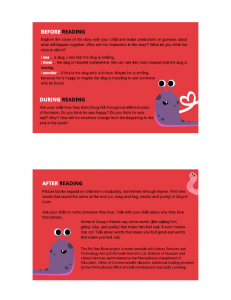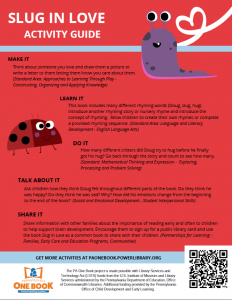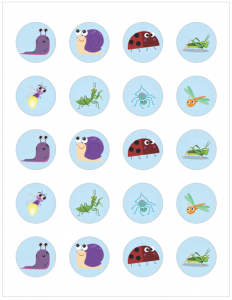The Pennsylvania One Book initiative is a valuable program that highlights the importance of early literacy development in preschoolers and the significance of reading early and often to children, as well as engaging them in conversation and other activities around books. The program has remained successful in part due to the partnership of collaborating agencies that all support early childhood literacy efforts.
PA One Book Activities for Slug in Love
Below are some conversation starters to use as you dive into this year’s PA One Book, Slug in Love, with your child.
BEFORE READING:
- Introduce the title and the author and the illustrator. Explain the author writes the story and the illustrator draws, paints, and creates the pictures in the story.
- Explore the cover of the story with your child and make predictions or guesses about what will happen together. Who are the characters in the story? What do you think the story is about?
- Consider using these conversation starters next time you read with your child! Pause before finishing your sentences to see if the child shares!)
I see… a slug. I see that the slug is smiling.
I think… the slug is headed somewhere. We can see this heart shaped trail the slug is making.
I wonder… if this is the slug who is in love. Maybe he is smiling because he is happy or maybe the slug is traveling to see someone who he loves!
DURING READING:
- Ask children how they think Doug felt throughout different parts of the book. Do you think he was happy? Do you think he was sad? Why? How did his emotions change from the beginning to the end of the book?
- Ask your child about a time they were sad and feeling left out. How did it make them feel? What can they do to make sure their friends and family members don’t feel sad and left out?
AFTER READING:
Picture books expand on children’s vocabulary, sometimes through rhyme. Find new words that sound the same at the end (i.e. snug and hug, mucky and yucky) in Slug in Love.
- Ask your child to name someone they love. Talk with your child about why they love that person.
- Some of Doug’s friends say some words (like calling him grimy, icky, and yucky) that make him feel sad. It even makes him cry! Talk about words that make you feel good and words that make you feel sad.
Additional Activities Aligned to PA Early Learning Standards
APPROACHES TO LEARNING THROUGH PLAY – CONSTRUCTING, ORGANIZING, AND APPLYING KNOWLEDGE
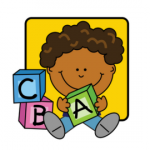
- Think about someone you love and draw them a picture or write a letter to them letting them know you care about them.
- Invite a new friend to engage in a play sequence.
LANGUAGE AND LITERACY DEVELOPMENT – ENGLISH LANGUAGE ARTS
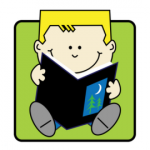
- After reading the story, have children retell what happened including identifying the main characters. Allow children to draw and use illustrations to show understanding of the text. Have children then discuss the main idea of the text.
- This book includes many different rhyming words (Doug, slug, hug). Introduce another rhyming story or nursery rhyme and introduce the concept of rhyming. Allow children to create their own rhymes or complete a provided rhyming sequence.
- Throughout the reading of the story, have children make predictions about what is coming next. Have the children think and share what critters Doug may meet next.
MATHEMATICAL THINKING AND EXPRESSION – EXPLORING, PROCESSING, AND PROBLEM-SOLVING
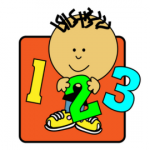
- How many different critters did Doug try to hug before he finally got his hug? You can go back through the story and count to see how many.
- Shapes can be found everywhere! Have children refer to different pages in the book and identify the different shapes that can be found. How many different shapes can you find?
SCIENTIFIC THINKING AND TECHNOLOGY – EXPLORING, SCIENTIFIC INQUIRY AND DISCOVERY
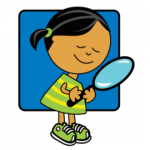
- Using the internet or available reference books, look deeper into the characteristics of slugs. Have children ask questions or make predictions about the characteristics of slugs and then participate in the investigation.
- Throughout the book there are many living (slug, ladybug, worm) and non-living (logs, rocks, car) things. Explore the difference between the two and talk about how living things grow and change.
- After reading the book, have children go on a nature walk/slug hunt! The children will go search for any of the characters from the book. Create reference cards with pictures of all the book characters. Create a worksheet where children can draw pictures of the characters they find outside.
SOCIAL STUDIES THINKING – CONNECTING TO COMMUNITIES
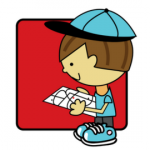
- Have children describe the physical characteristics of where this story may have taken place. What are some other physical features of nature?
- Doug is lonely and looking for a friend. Having a community around you helps you not feel lonely. Who are some members of your community that you can have as a friend?
- Doug and the lady bug found many different things to do together in their community (went out to a restaurant, ate together in the park). Think about your local community and brainstorm some ideas that you can do for fun in your community.
CREATIVE THINKING AND EXPRESSION – COMMUNICATING THROUGH THE ARTS
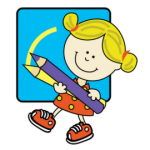
- Have children recreate their favorite part of the story using a variety of technology and tools.
- Have children act out and re-create a part of the story. Encourage children to use voice inflections and facial expressions. Have children help and support each other when acting out their parts.
HEALTH, WELLNESS, AND PHYSICAL DEVELOPMENT – LEARNING ABOUT MY BODY
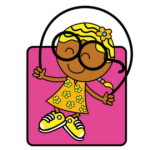
- Doug and the lady bug enjoy going out to eat where they eat a caterpillar. What kind of foods do we eat to keep our body’s healthy? Create a list of the different healthy foods we eat.
- Doug lives outdoors and enjoys moving all around. Discuss the health benefits of participating in physical activity outdoors for your body. Encourage children to think of their favorite activities to do outdoors.
- Standard Area 10.5: Concepts, Principles, and Strategies of Movement – Fine Motor Coordination- (fine motor and cutting practice)-Create a worksheet that shows dotted line patterns of the slug’s slimy trail he leaves behind when moving. Children will trace and cut the line patterns.
- Move like a slug! Move as slowly as you can from one point to another.
SOCIAL AND EMOTIONAL DEVELOPMENT – STUDENT INTERPERSONAL SKILLS
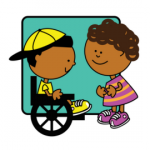
- Throughout the story Doug wants a hug. How do you think Doug is feeling when he wants a hug? How do you think Doug felt after he got a hug?
- Some of Doug’s friends say some words (like calling him grimy, icky, and yucky) that make him feel sad. It even makes him cry! Talk about words that make you feel good and words that make you feel sad.
- Ask children how they think Doug felt throughout different parts of the book. Do you think he was happy? Do they think he was sad? Why? How did his emotions change from the beginning to the end of the book?
- Ask children about a time they were sad and feeling left out. How did it make them feel? What can they do to make sure their friends and family members don’t feel sad and left out?
- A slug’s pace is slow and steady. Practice mindfulness by slowing your body, sitting comfortably and noticing your breath and the environment around you.
PARTNERSHIPS FOR LEARNING – FAMILIES, EARLY CARE AND EDUCATION PROGRAMS, COMMUNITIES

- Encourage families to explore nature. Help make them aware of the benefits of getting children outdoors.
- Hold a family night or weekend event that uses the activities provided in the PA One Book Fun Guide to engage parents and families.
- Share information with families about the importance of reading early and often children to help support brain development. Encourage the family to sign up for a public library card and use the book Slug in Love as a common book to share with their children.
Monthly Activities to encourage year round use of the PA One Book
Doug the slug needs a hug. But who wants to hug a slug called Doug? After a long search for someone to snuggle, lonesome Doug is ready to give up hope. But you never know when love might come flying by – it can happen any time of the year!
January
Explore science with Doug this month!
- Display photos of slugs, caterpillars, worms, spiders, snails and ladybugs. Talk about the differences and similarities.
- Make a display board showing the parts of a snail and the parts of a slug. How do they compare? What differences can you see? What similarities are there?
- Blocks- Construct a slug home. Provide natural materials in your block center to build a slug home or any character from the book Slug in Love. Slugs live in cool shady conditions- commonly found under leaf piles, boards, rocks, flowerpots and mulch.
February
Celebrate National Hug Day on February 12!
Create, make art, and express yourself!
- Can you make an insect or worm character from the book? Use play dough or clay to make the characters in 3D or use paper plate, string, construction paper, google eyes, glue and writing materials to design a character in craft form.
- Enjoy this free love bug craft! Perfect to have children create after reading Slug in Love!
- Sing and dance to the Snail Song.
March
Celebrate National Slug Day on March 19!
Let’s pretend!
- Make pretend slugs and bugs using play dough, clay or salt dough. Use your pretend slugs and bugs to role play!
- Introduce the word entomologist – a scientist who studies insects. An entomologist studies insects and their relationships with other organisms and the environment. Talk about what an entomologist does.
- Become entomologists as you study insects: slugs caterpillars, worms, spiders, snails and ladybugs)
April
April 6-12, 2024 is the Week of the Young Child
Explore outside!
- Go on an insect and worm hunt.
- Can you find a slug, caterpillar, worm, spider, snail, ladybug on your hunt?
- Use tweezers, a piece of paper or your fingers to carefully grab or scoop the insect or worms and collect them in a container.
- Count how many of each you found and make a chart to see which ones you found the most, least, or equal amounts of!
- Talk about where you found the bugs. What was similar and what was different about each location?
- What words can be used to describe the colors, shapes and textures of each?
- Slug tracks- Go on a slug hunt and collect a few slugs. Place them on a sheet of colored construction paper and watch them make slimy trails!
- Slug races – Line several slugs up and have them race to the end of the piece of construction paper!
- During your insect hunt, document your observations. Draw and write about your discoveries.
May
Celebrate National Snail Day on May 29!
Share the story in new ways!
- Use props and then act out the story characters in Slug in Love.
- Make story sequencing cards for each of the characters (Slug, caterpillar, worm, spider, snail, ladybug).You can easily make sequencing cards by taking photos of each of the characters in the book and printing them out small. Laminate and have children use to retell the story. You could also glue them to popsicle sticks for hand puppets. Place in a basket with the book for easy access!
June
- Revisit Rhymes and Create Characters!
- Do a rhyming activity using the characters in the book. Examples include:
- What rhymes with Slug? Bug, mug, dug
- What rhymes with Spider? Cider, slider
- Count the syllables in the words in the book Slug in Love.
- Example: Caterpillar- 4 Syllables
- Worm- 1 Syllable
- After reading the story, choose one of the book characters (Slug, caterpillar, worm, spider, snail, ladybug) and draw the character on a sheet of paper. Use watercolors to paint the drawing.
July
Celebrate Be Nice to Bugs Day on July 14!
Make the story your own!
- Create your own story using the characters from the book. (slug, caterpillar, worm, spider, snail and ladybug)
August
Head back outside for summertime fun!
- Gross and Fine Motor- Go on another insect and worm hunt.
- Can you find a slug, caterpillar, worm, spider, snail, ladybug on your hunt?
- Use tweezers, a piece of paper, or your fingers to carefully grab or scoop the insect or worms and collect them in a container.
- Count how many of each you found and make a chart to see which ones you found the most, least, or equal amounts of! Compare findings to the hunt from April and talk about the similarities and differences in the amount of slug, caterpillar, worm, spider, snail, ladybugs you found.
- Talk about where you found the bugs. What was similar and what was different about each location?
- What words can be used to describe the colors, shapes and textures of each?
September
Explore your senses!
- Make a sensory bin with plastic slugs, caterpillars, worms, spiders, snails, ladybugs and add natural materials such as rocks, wood cookies, sticks, acorns and pinecones to play in. Add scoops and containers to encourage dumping, scooping and pouring.
October
Celebrate National New Friends Day on October 19!
Explore a new language!
- Make a posterboard of the story characters slugs, caterpillars, worms, spiders, snails, ladybugs and write them in another language. For example, in Spanish, Slug is Trago and Caterpillar is Oruga.
- Use Google to translate the word from English into another language, then listen to how it’s pronounced. Try to say it together. How many different languages can you say for each word?
November
What happens when the seasons change?
- Talk about adaptation, migration and hibernation. Which of the story characters adapt? Migrate? Hibernate? What other animals adapt? What other animals migrate? What other animals hibernate?
December
Celebrate National Slime Day on December 7!
A winter bug hunt? Why not!?
- Bundle up and go on another insect and worm hunt.
- Can you find a slug, caterpillar, worm, spider, snail, ladybug on your hunt? If not, where do you think all the bugs have gone?
- Use tweezers, a piece of paper or your fingers to carefully grab or scoop the insect or worms and collect them in a container.
- Count how many of each you found and make a chart to see which ones you found the most, least, or equal amounts of! Compare findings to the hunts from April and August and talk about the similarities and differences in the amounts of slugs, caterpillars, worms, spiders, snails, and ladybugs you found.
- If you don’t find any creatures outside, are there any insects that tried to sneak in your house to keep warm?
- If it’s too cold to hunt outside, you can visit your local public library to get a book about insects, slugs, or worms. It’s fun to find facts about each creature you explored this year!
Pennsylvania’s Learning Standards for Early Childhood are research-based according to age and development, and form the foundation for curriculum, assessment, instruction and intervention within early care and education programs. They can help families determine what their child might be learning in an early learning setting. Learn more at www.pakeys.org/pa-early-learning-initiatives/early-learning-standards
